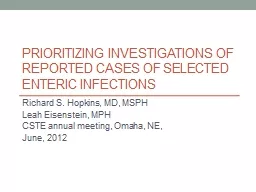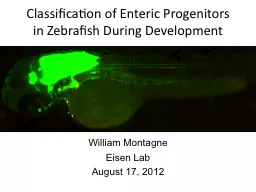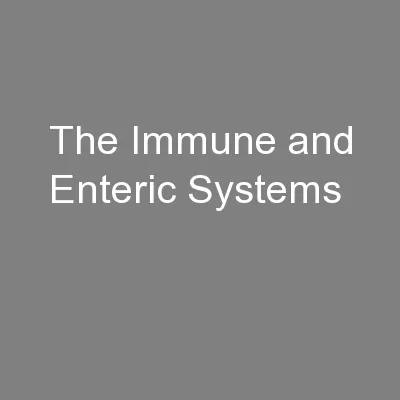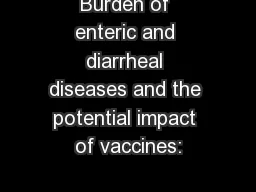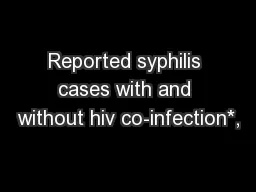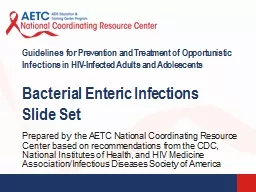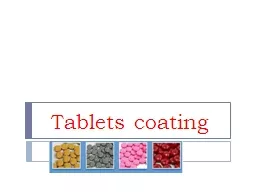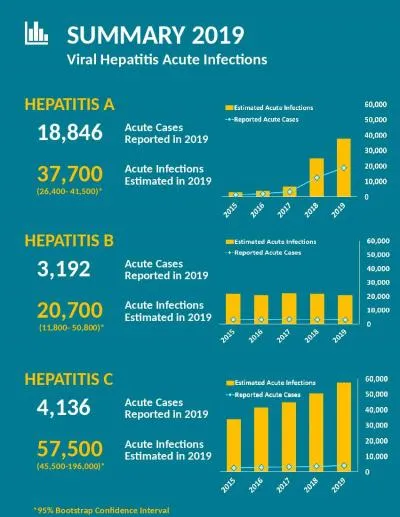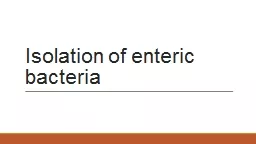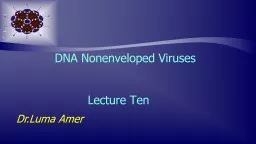PPT-Prioritizing investigations of reported cases of selected enteric infections
Author : calandra-battersby | Published Date : 2018-11-21
Richard S Hopkins MD MSPH Leah Eisenstein MPH CSTE annual meeting Omaha NE June 2012 Background Florida consistently has the highest number and one of the highest
Presentation Embed Code
Download Presentation
Download Presentation The PPT/PDF document "Prioritizing investigations of reported ..." is the property of its rightful owner. Permission is granted to download and print the materials on this website for personal, non-commercial use only, and to display it on your personal computer provided you do not modify the materials and that you retain all copyright notices contained in the materials. By downloading content from our website, you accept the terms of this agreement.
Prioritizing investigations of reported cases of selected enteric infections: Transcript
Richard S Hopkins MD MSPH Leah Eisenstein MPH CSTE annual meeting Omaha NE June 2012 Background Florida consistently has the highest number and one of the highest rates of salmonellosis cases reported among the states. . Dr. . Thanaa. . Rasheed. The . Enterobacteriaceae. . is a large family of gram-negative rods found primarily in the intestinal tract of humans and . animals.. They cause a variety of diseases.. Zebrafish. During Development. William Montagne. Eisen. Lab. August 17, 2012. Enteric Nervous System (ENS) Background. ENS is the largest part of the Peripheral Nervous System. Intrinsic . innervation. Sue Howell, DVM. The Immune System. www.nobelprize.org. . Identify . potentially . injurious substances. Distinguish . self from non-self. Assess level . of threat . Mount an appropriate response. Anson Lowe - Course . Director. Alway. . Bldg., M-207. E-mail: . lowe@stanford.edu. A basic understanding of the overall organization of the gastrointestinal system. An understanding of how the different gastrointestinal organs are regulated and coordinated with each other . in Government . Beneficial. ? Are there . Consequences. ? . Adv Boyce Mkhize. Director: Forensic Audits. 21 June 2017. Imfo Risk and Audit Indaba. Cape Town. Contents. Trends Analysis - National Departments. Duncan Steele. Deputy Director and Strategic Lead, Enteric Vaccines. © 2014 Bill & Melinda Gates Foundation. IDM Annual Meeting: April 19, 2017. © Bill & Melinda Gates Foundation |. 2. Wisconsin 2016. Created by the State of Wisconsin STD Control Section. *All syphilis cases are diagnosed for the current year of the report; however,. . the co-infected cases are those with a new or pre-existing HIV diagnosis.. National Institutes of Health, and HIV Medicine Association/Infectious Diseases Society of America. Guidelines for Prevention and Treatment of Opportunistic Infections in HIV-Infected Adults and Adolescents. 1- . Protection of the drug from the . surrounding (environment. ) (air, light and moisture) and . thus . improve . stability. .. 2- Modifying drug release, as in . enteric coating. . and . extended-release. Duties and responsibilities for Supervising InvestigatorfollowingWork collaboratively with Assistant Attorney General AAG to plan direct and supervise highly complex and sensitive investigations using HEPATITIS A. 18,846. Acute Cases. Reported in 2019. 37,700. (. 26,400- 41,500. )*. Acute Infections. Estimated in 2019. HEPATITIS B. 3,192. Acute Cases. Reported in 2019. 20,700. (11,800- 50,800)*. Acute Infections. This family includes many genera:. 1 .Escherichia coli. 2. . Klebsiella. ,. . Enterobacter. , . Citrobacter. , . Serratia. .. 3. Proteus- 4-Shigella, Salmonella. General characteristic. Member of . DULOXETINE HYDROCHLORIDE A Dissertation submitted to THE TAMIL NADU Dr. M.G.R. MEDICAL UNIVERSITY CHENNAI - 600 032 In partial fulfillment of the requirements for the award of the Degree of MASTE R Lecture . Ten. Dr.Luma. . Amer. DNA Nonenveloped Viruses. Parvoviruses. Adenoviruses. Polyomaviruses. Papillomaviruses. Adenovirus Structure. (animals: more than 100 serotypes,. 41 human serotypes).
Download Document
Here is the link to download the presentation.
"Prioritizing investigations of reported cases of selected enteric infections"The content belongs to its owner. You may download and print it for personal use, without modification, and keep all copyright notices. By downloading, you agree to these terms.
Related Documents

